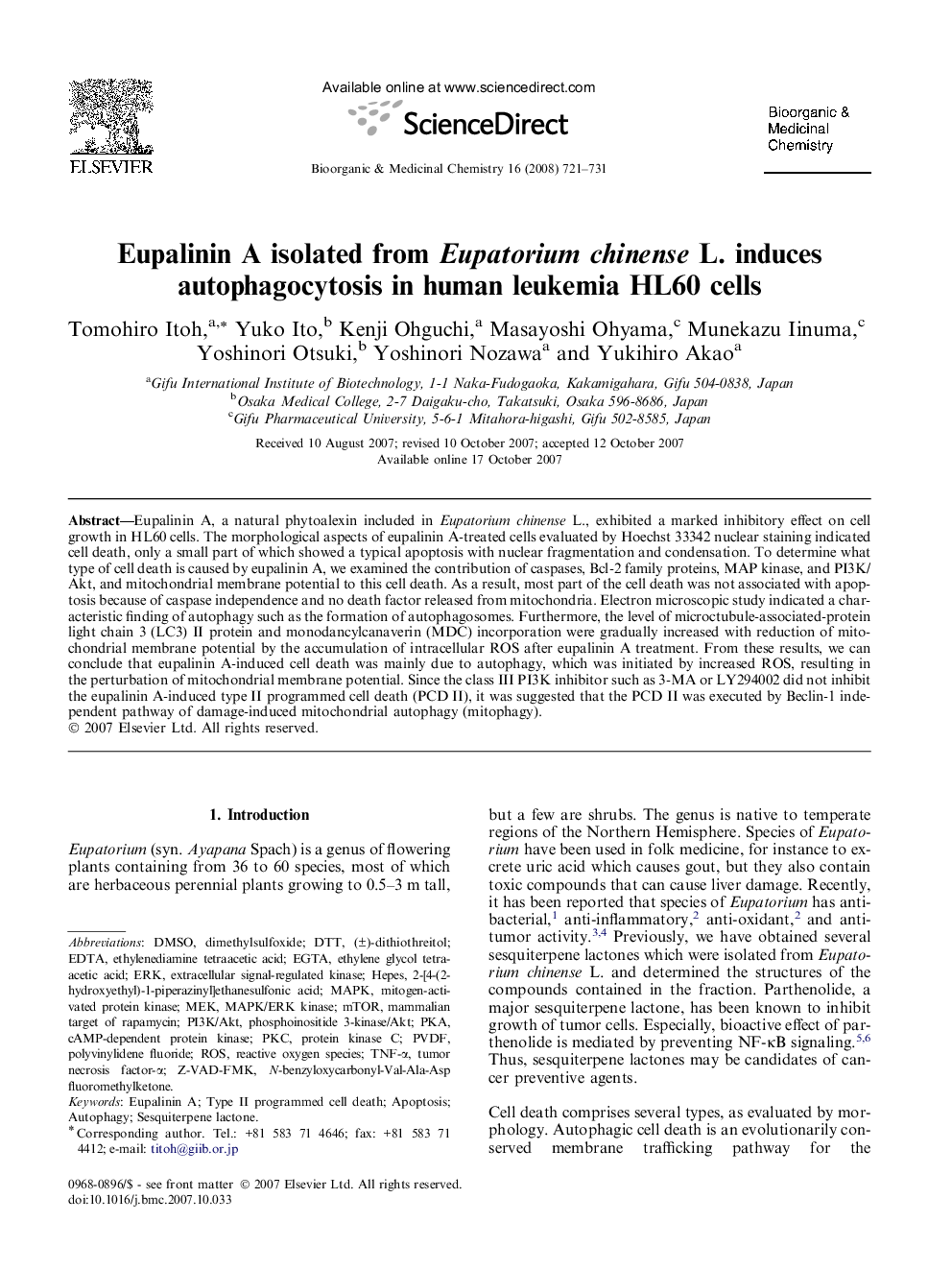| کد مقاله | کد نشریه | سال انتشار | مقاله انگلیسی | نسخه تمام متن |
|---|---|---|---|---|
| 1361618 | 981468 | 2008 | 11 صفحه PDF | دانلود رایگان |

Eupalinin A, a natural phytoalexin included in Eupatorium chinense L., exhibited a marked inhibitory effect on cell growth in HL60 cells. The morphological aspects of eupalinin A-treated cells evaluated by Hoechst 33342 nuclear staining indicated cell death, only a small part of which showed a typical apoptosis with nuclear fragmentation and condensation. To determine what type of cell death is caused by eupalinin A, we examined the contribution of caspases, Bcl-2 family proteins, MAP kinase, and PI3K/Akt, and mitochondrial membrane potential to this cell death. As a result, most part of the cell death was not associated with apoptosis because of caspase independence and no death factor released from mitochondria. Electron microscopic study indicated a characteristic finding of autophagy such as the formation of autophagosomes. Furthermore, the level of microctubule-associated-protein light chain 3 (LC3) II protein and monodancylcanaverin (MDC) incorporation were gradually increased with reduction of mitochondrial membrane potential by the accumulation of intracellular ROS after eupalinin A treatment. From these results, we can conclude that eupalinin A-induced cell death was mainly due to autophagy, which was initiated by increased ROS, resulting in the perturbation of mitochondrial membrane potential. Since the class III PI3K inhibitor such as 3-MA or LY294002 did not inhibit the eupalinin A-induced type II programmed cell death (PCD II), it was suggested that the PCD II was executed by Beclin-1 independent pathway of damage-induced mitochondrial autophagy (mitophagy).
Eupalinin A, one of the sesquiterpene lactones extracted from Eupatorium chinense L., indicated cytotoxic activity against HL60 cells. In our experiment, this cytotoxic activity was executed mainly by autophagy.Figure optionsDownload as PowerPoint slide
Journal: Bioorganic & Medicinal Chemistry - Volume 16, Issue 2, 15 January 2008, Pages 721–731